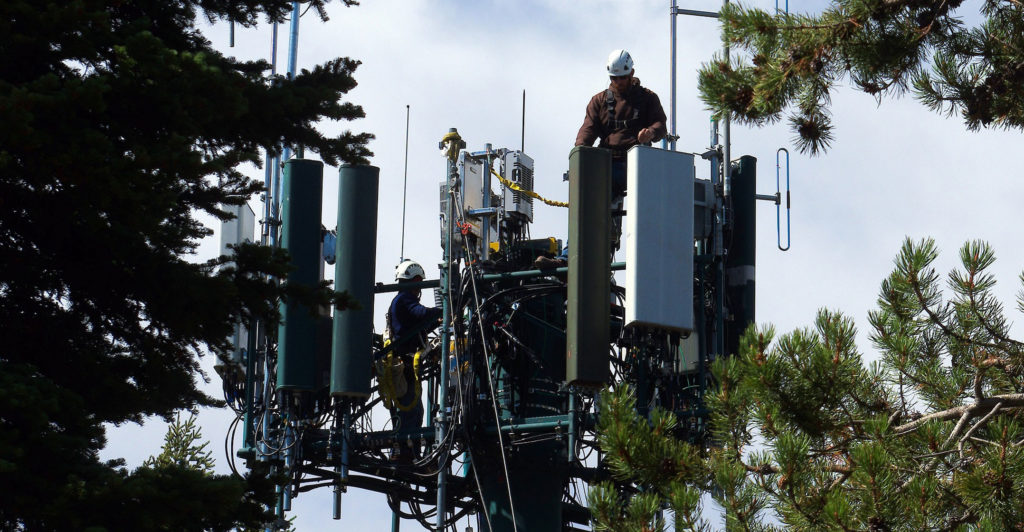
Remgro’s telecommunications infrastructure holding company CIVH has made it crystal clear that it wants to be a major player in South Africa’s planned wholesale open-access network (Woan) and has lobbied communications regulator Icasa to provide strong support to the new entity.
In a submission to Icasa, CIVH — or Community Investment Ventures Holdings — which owns Dark Fibre Africa and Vumatel, said the Woan must be given support by the regulator, including access to prime radio frequency spectrum, to make it economically viable. Without it, the Woan could fail, it said. Remgro owns 54% of CIVH.
The idea behind the Woan — a controversial concept that is largely untested in markets around the world — is to create a new wholesale, open-access infrastructure provider to reduce the dominance of incumbents Vodacom and MTN by giving smaller service providers access to a national network. The Woan will be owned by private-sector players, not the government.
In the written submission in reply to Icasa’s Information Memorandum ahead of the licensing of key spectrum bands suitable for 4G and 5G mobile broadband deployment, CIVH said: “We support the principle of providing the Woan with incentives to reduce the barriers to entry.”
However, it warned that the Woan will need more support than Icasa proposes in the Information Memorandum, including access to larger tracts of spectrum, mandated off-take purchases from commercial mobile operators and the ability to roll out a national network quickly and without significant friction.
CIVH’s submission — the public version of which is heavily redacted for confidentiality reasons — outlines five points it believes are essential to the success of the Woan: 1) it must be assigned sufficient and suitable spectrum; 2) off-take obligations on other telecommunications licensees must be extended; 3) it must get access to essential facilities with reasonable commercial terms; and 4) it must get reasonable spectrum licence payment terms. The fifth point in the document is redacted.
Costs reduced
On spectrum, it said the Woan can succeed if it is able to provide wholesale capacity to mobile operators such as Vodacom and MTN that compares favourably with the cost of those networks deploying their own infrastructure. “Without sufficient spectrum assigned to the Woan, this will not be possible. With a higher spectrum assignment, incremental network deployment costs are reduced, enabling more competitive unitary network economics, and hence wholesale capacity pricing.”
It said only one of the options put forward by Icasa in its Information Memorandum proposes providing the Woan with 115MHz of spectrum — the rest will see the entity getting 80MHz in total. But CIVH said its “indicative assessment” has found that 115MHz within the “low and mid bands” (two ranges of spectrum) is “not sufficient for a sustainable Woan”.
“Even with a minimum of 115MHz, considerable additional incentives and obligations are required to make the Woan commercially viable,” it said.
 It also encourages Icasa to make spectrum in the 3.6GHz band available to the Woan to allow it to deploy a 5G network. The Information Memorandum has not set aside 5G-suitable spectrum for the Woan, and intends auctioning off spectrum at 3.5GHz for 5G, which could preclude the new entity from participating. Specifically, CIVH has proposed that the Woan gets 2x30MHz in the 700MHz band, 50MHz at 2.6GHz and 100MHz at 3.6GHz.
It also encourages Icasa to make spectrum in the 3.6GHz band available to the Woan to allow it to deploy a 5G network. The Information Memorandum has not set aside 5G-suitable spectrum for the Woan, and intends auctioning off spectrum at 3.5GHz for 5G, which could preclude the new entity from participating. Specifically, CIVH has proposed that the Woan gets 2x30MHz in the 700MHz band, 50MHz at 2.6GHz and 100MHz at 3.6GHz.
CIVH also wants more support in the form of off-take obligations from other operators beyond the three to five years Icasa has proposed. “Construction of the Woan will require billions of rand,” it said. “Following the five-year guaranteed off-take period, the Woan might expect that only mobile virtual network operators, fixed-wireless access providers and government continue to procure wholesale capacity.”
However, it said international case studies suggest that a Woan’s failure to secure support from commercial mobile network operators on an ongoing basis “typically leads to unsustainable financial outcomes”. As a result, the company wants the offtake period for all licensees that also have access to so-called high-demand spectrum (Vodacom, MTN, etc) to be not less than 15 years.
CIVH’s submission also calls for “reasonable” spectrum licence payment terms for the Woan, including a minimum of a five-year payment holiday, no reserve prices and longer licence payment terms “ideally triggered by attainment of milestones indicative of commercial viability”. The Woan should all get access to essential facilities and roadblocks should be removed to ensure it can deploy its network rapidly. It said it will be critical to ensure the Woan can gain “rapid and unencumbered access to land to build out a national network”.
The CIVH submission comes after the company’s chairman Pieter Uys — who is a former group CEO of Vodacom — told TechCentral in November 2019 that it is looking beyond the fibre industry into new areas of telecoms, including data centres, tower assets and open-access wireless infrastructure, including 5G.
Beyond fibre
“It’s not our interest just to be a fibre player,” Uys said. “We are interested in anything in the wholesale open-access space. This could include data centres, towers and even open-access radio infrastructure.”
Uys was speaking to TechCentral following the announcement that Vodacom’s group chief technology officer, Andries Delport, would join CIVH in May 2020.
One of Delport’s first tasks will be helping Remgro and CIVH understand the opportunities in open-access radio, including 5G. “We are open to anything in that space,” Uys said.
“The opportunity to join CIVH brings with it fresh, new challenges at this stage of my career and at a time when the ICT industry is rapidly evolving,” Delport said at the time of the announcement. “Competition will increasingly come from non-traditional entities and I am looking forward to using the vast technical and people skills experience that I have garnered at Vodacom with the aim of making a significant difference as part of CIVH.” — © 2020 NewsCentral Media




